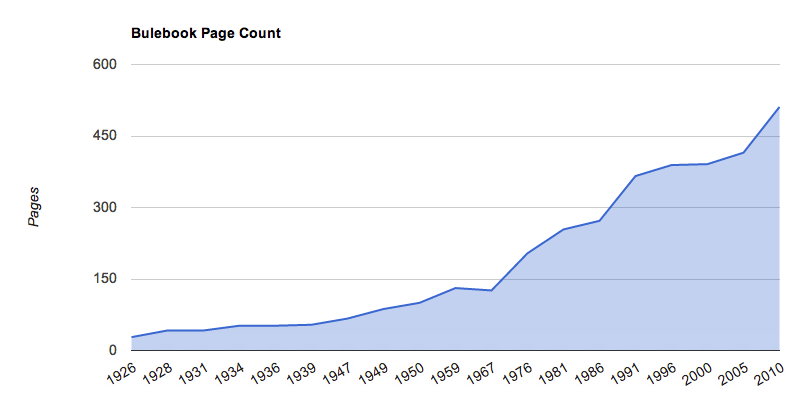In the ABA Journal, Bryan Garner muses why the editors of The Bluebook see fit to make small, and largely unnecessary changes every few years:
What I’ve come to realize is that when it comes to The Bluebook, small changes are made for the sake of making small changes. New law students want their predecessors’ work to look obsolete. It’s the theory first elaborated by the social philosopher Thorstein Veblen: planned obsolescence. Veblen postulated that companies deliberately produce consumer goods that will become outdated after limited use so that consumers will have to buy new items more often.
You see the principle at work with smartphone chargers (your old ones won’t work on your new gear), iPod connections (ditto), lightbulbs and even coursebooks. Legal publishers like frequent editions so as to avoid the forgone profits represented by a secondhand market.
And so it is with The Bluebook. Things shift from edition to edition—every five years or so—in response to nothing but the itch of a new crop of law students to leave their mark on their venerated citation guide.
In 2011, I plotted the growth of the Bluebook. Over the last 90 years, over 19 editions, the Uniform System of Citations, commonly known as the Bluebook, has increased from 28 pages to 511 pages.
- 1st Edition (1926): 28 pages
- 2nd Edition (1928): 42 pages
- 3rd Edition (1931): 42 pages
- 4th Edition (1934): 52 pages
- 5th Edition (1936): 52 pages
- 6th Edition (1939): 54 pages
- 7th Edition (1947): 67 pages
- 8th Edition (1949): 87 pages
- 9th Edition (1950): 100 pages
- 10th Edition (1959): 131 pages
- 11th Edition (1967): 126 pages
- 12th Edition (1976): 204 pages
- 13th Edition (1981): 254 pages
- 14th Edition: (1986): 272 pages
- 15th Edition (1991): 366 pages
- 16th Edition (1996): 389 pages
- 17th Edition (2000): 391 pages
- 18th Edition (2005): 415 pages
- 19th Edition (2010): 511 pages
I haven’t even bothered to do an updated graph for the 20th edition. The last time I carefully studied a Bluebook was while I was clerking. I don’t even own a copy.
